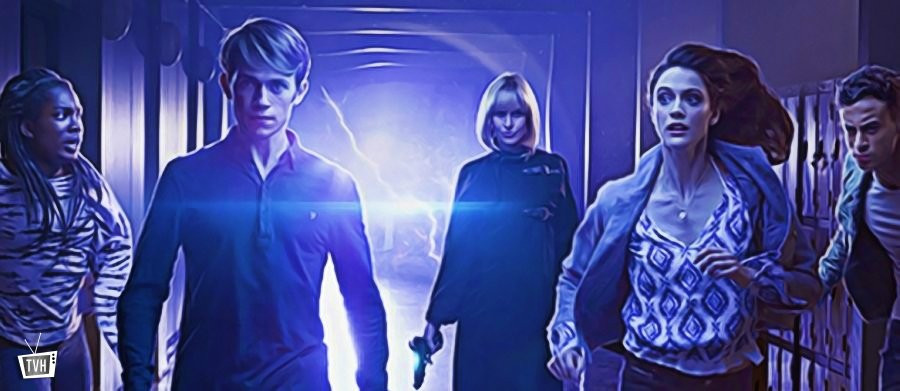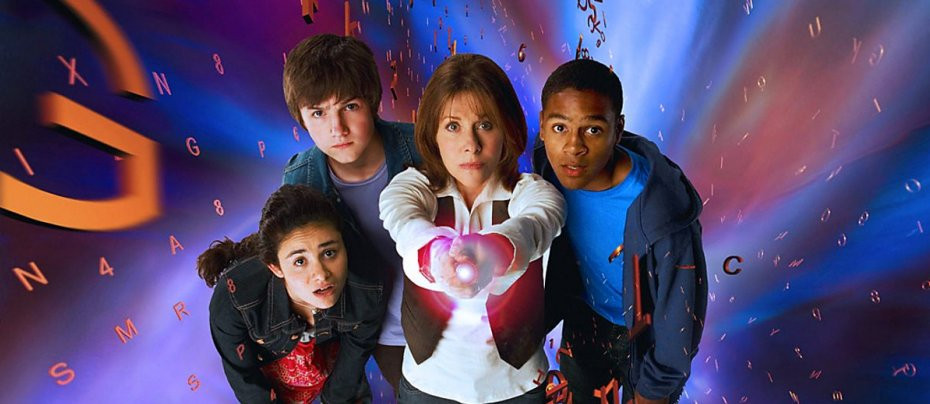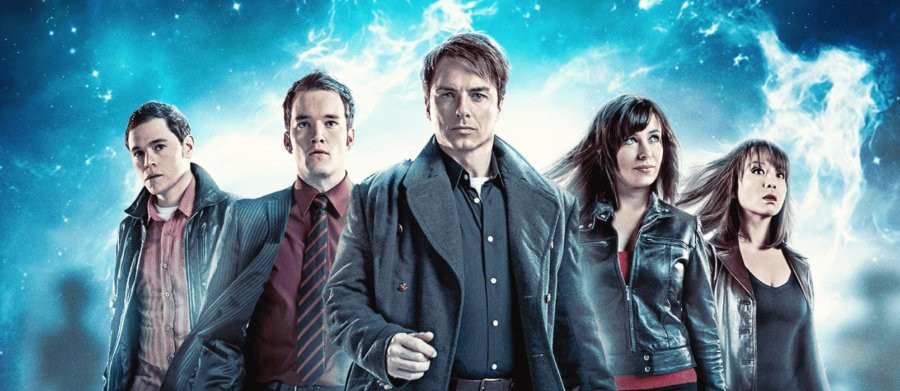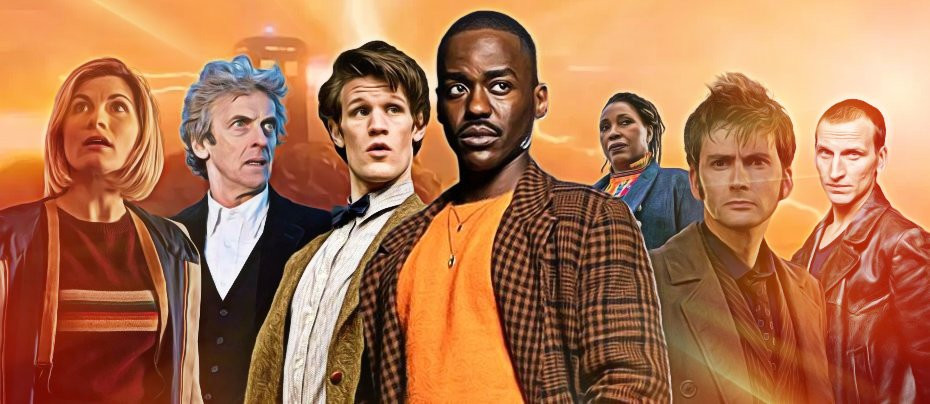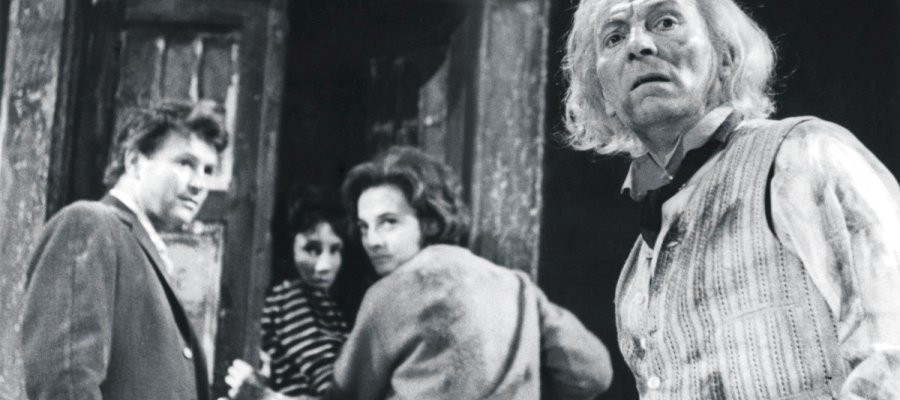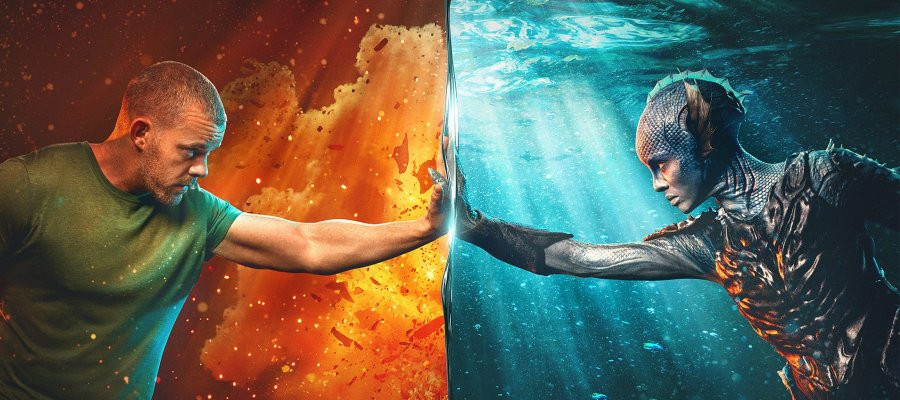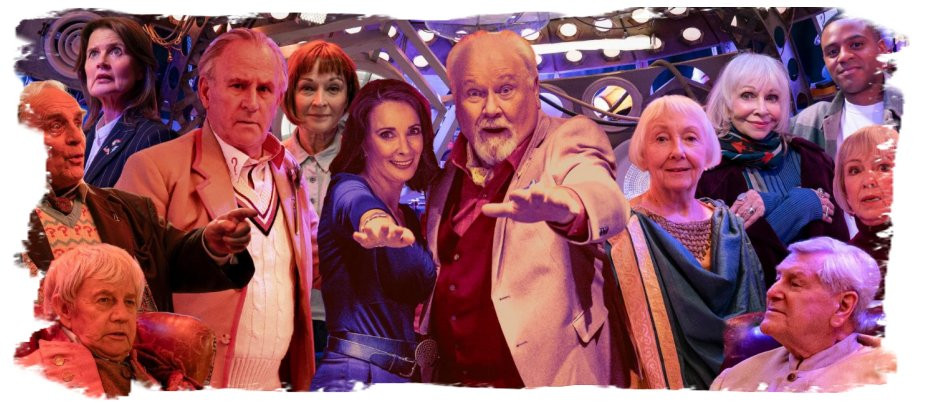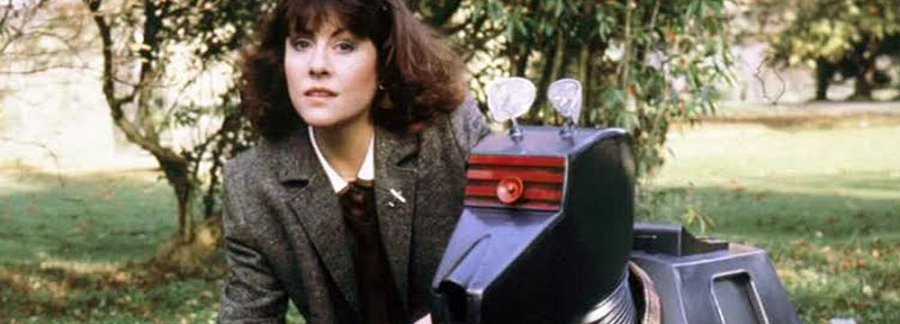The Ark
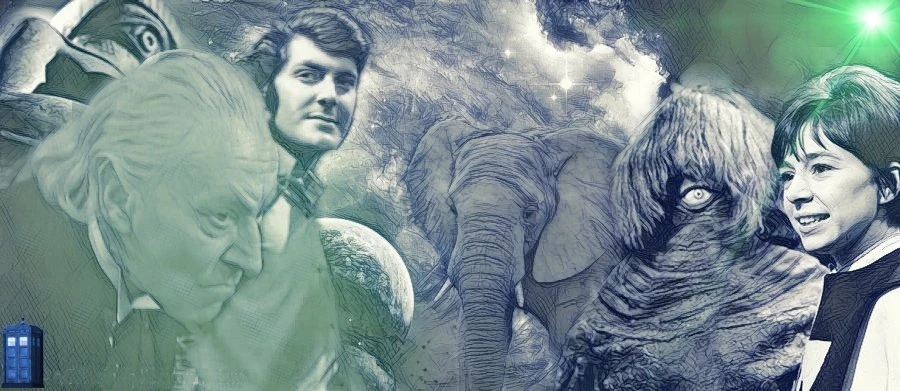
The Ark is an early, often overlooked Doctor Who serial; unassuming and sedately paced, it's quietly brilliant in ways that are easy to take for granted now, but were cutting edge for the series in 1966. The remarkable thing about The Ark is its size and scope. Everything here is huge, from the enormous spaceship that acts as its main setting to the expanse of time it journeys through.
The story starts quietly enough, with the Doctor (William Hartnell – the original, you might say) and his established companion Steven Taylor (Peter Purves, forever better known for his time as a Blue Peter host) arriving in a lush jungle, accompanied by one Dorothea “Dodo” Chaplet, who had stowed away in the TARDIS at the very end of the preceding serial (the now lost The Massacre, a remarkably bleak historical). Played by Jackie Lane, who we sadly lost this year, Dodo is the series' first attempt at a young contemporary companion. Susan (Carole Ann Ford) had been an alien trying to blend in as a 1960s teen; her teachers Ian and Barbara (William Russell and Jacqueline Hill) had been quite youthful but played the roles rather fuddy-duddy; and everyone since had been either from the distant future or the ancient past. Dodo was the series' first try at a swinging sixties kid. She didn't quite work; even now it's clear her slang is off kilter, her accent wanders all over England as her instructions on how to play the character changed, and she spends more time complaining than enjoying her adventures. Still, at least she wears some fantastic clothes. Even the Mediaeval page's outfit she picks out of the TARDIS wardrobe looks like the sort of thing someone from 1966 would try on for a laugh.
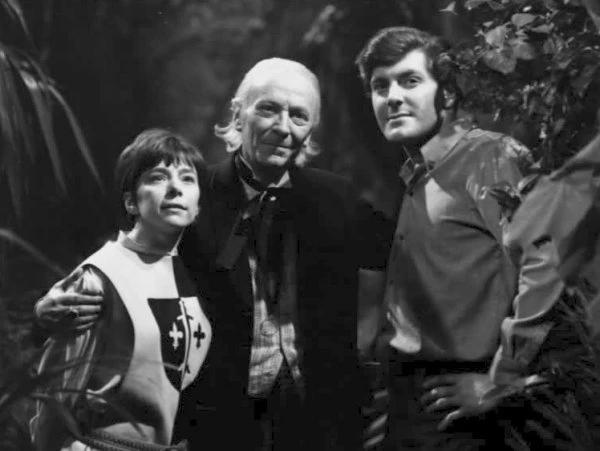
Grounding the series more in a (then) contemporary setting works well, getting the programme back to its earliest set-up with a character who represented the audience in a way that, for instance, Steven couldn't. Although Purves plays him very much as a solid, common-sense sort of chap, he's still a space pilot from the future, and so is removed from the experience of the audience. Introducing Dodo gives the series a foot back in the real world, and the timing is perfect given that The Ark takes the series farther than it’s ever gone before.
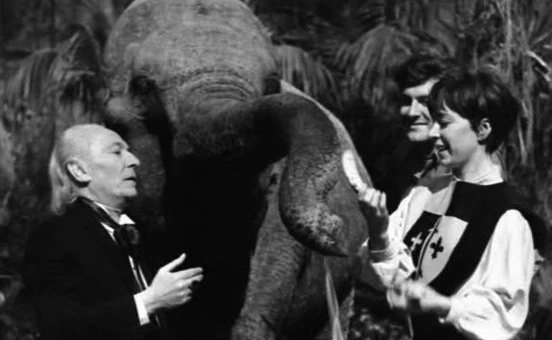
The jungle scene is both a feint and an ingenious way into the story's setting. While it's obviously a studio mock-up of a jungle with some exotic plants, we're clearly meant to take this as an attempt to represent a real rainforest, the sort of thing the series would usually do. It's only when the shot changes and we see the view of the characters looking up that we see the roof above their head: “The Steel Sky” that gives the first episode its title. The Doctor and Steven deduce they're on a huge spaceship of some kind. That's not the only surprise in this sequence, though. The jungle includes plenty of wildlife, with the travellers encountering exotic birds, but then it cuts away to footage of a young elephant. The immediate assumption, again, is that this is being done on the cheap: they've spliced in some stock footage, and not for the first time. At least, that's until the Doctor and Dodo enter the shot and go up and pat the elephant on the head. Monica the elephant had been lent to the BBC for filming. It must have been a brilliant shock for viewers in 1966 to see that this cheap bit of sci-fi had managed to get a real elephant into the studio.
It isn't too long before the travellers learn the truth about the ship they're on. The enormous vessel is home to the last survivors of the doomed planet Earth, with the animals and plants already encountered being only a handful of specimens. The last of humanity are running the ship, searching for a new home at the other end of the galaxy as the Earth is drawn into the sun. Most of the population of the Earth, human and otherwise, has been miniaturised and stored in vast banks of life. This is also the punishment for those who break the law and endanger the ship: shrunk down to microscopic size and backed up for the journey. On the other end of the scale, they're building a huge statue named Homo sapiens, which they predict will take the whole seven hundred years of their journey to complete.
They're not the only people on the ship: the humans are accompanied by the Monoids, a race of cyclopean aliens who came to Earth as refugees when their own planet was threatened and are now travelling with humanity to their new home. Now, it's true that they look a bit silly: dumpy, scaly humanoids with Beatles-mop haircuts (I said this was rooted in the Sixties – in less than a year, Patrick Troughton will be introduced as the Doctor with a similar hairstyle, so it's clearly the in thing throughout time and space). The Monoids are cleverly realised though: the main ones are played by actors enveloped in rubber costumes, with the wigs over their eyes, while the Monoid's single eye is held in the mouth. This allows the actor to move the eye using their tongue – an ingenious low-tech way of animating an inhuman face. Who needs to wait for animatronics to be invented?
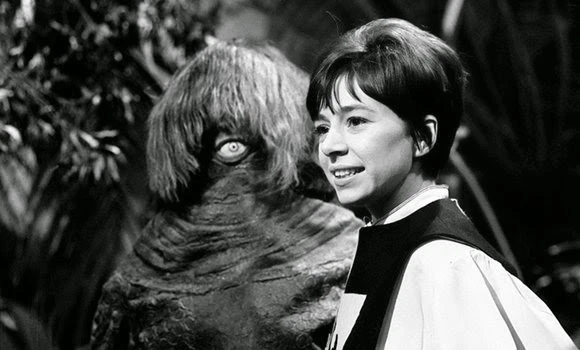
This has the secondary effect, of course, of making the Monoids mute. Rather than simply adding a voiceover, the producer of the series, John Wiles, decided they should use sign language. He had a background in theatre for deaf children and brought in a sign language interpreter to train the Monoid actors. It was Wiles's idea for the serial in the first place, handing it over to writer Paul Erickson (Night of the Prowler, Paul Temple, Out of the Unknown) to script. Giving the Monoids their own, silent language sets them apart from the usual ranting aliens on Doctor Who. The Monoids are, though, a downtrodden minority, acting as slaves to the humans during the long voyage. While the Monoids were probably meant to be green – they're reptilian aliens, of course they'd be green – on monochrome video they appear a dark grey-black. Alongside the unfortunate, but inescapable fact that all the human characters in this production are white, and there's a distinct and obvious parallel to these dark-skinned beings and their subservience.
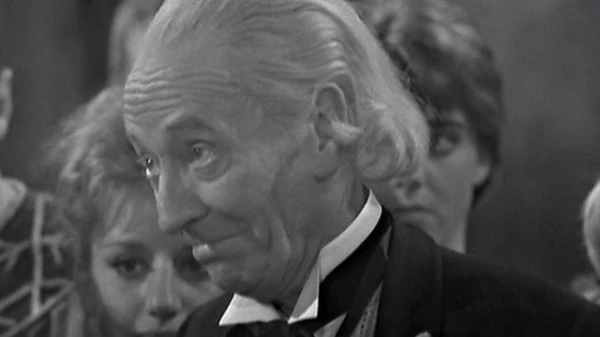
It doesn't take long for the Doctor and his fellow travellers to get in with the human voyagers, learning from them that they are now present in the Fifty-Seventh Segment of Time. It's one of those wonderful, throwaway phrases that evokes a sense of another world, far removed from our own, without actually meaning anything specific. The Doctor, rather spuriously, calculates immediately that they must be at least ten million years in the future, but it's not clear where he gets this number and he's known for pulling dates out of thin air in these early years. In any case, he drops a few stories about his travels to the human leaders, and is informed that the Romans, Trojans and even the Daleks were all confined to the First Segment of Time. In one fell swoop, every episode of Doctor Who so far is relegated to a tiny portion of history, a mere fifty-seventh of the time recorded by these futuristic people. Halfway through its third season, Doctor Who goes and opens up its future and says, “You ain't seen nothin' yet.”
There is, however, a crisis coming. Young Dodo has a bit of a cold – a minor inconvenience to her. To the people of the Ark, as they come to call it, it's a catastrophe. The Doctor reveals that the common cold was cured some time in our future, and so the people of the Ark, neither human nor Monoid, have any defence against the virus, and begin dying in droves. Even Steven, from an unspecified but comparatively nearby future, has no immunity. The Doctor and his companions find themselves of being accused of sabotage and wilfully infecting the population and are put on trial. There's a certain justification to this; the Doctor should surely have some kind of responsibility to stopping this kind of thing happening as he travels through space and time. Steven wonders aloud if this may have happened before, and the Doctor simply says that it's too terrible to contemplate. Talk about burying your head in the sand...
The second episode, “The Plague,” ends with the Doctor proving his good intentions by finding a treatment to the disease, and the travellers happily set off in the TARDIS again. They immediately reappear back on the Ark, and see that the statue has been completed. Only it's no longer the statue of a man – the head is that of a Monoid. It's a brilliant twist, and one of the series' best cliff-hangers. Remember, in these early days of the series, each episode had its own title and the length of a serial wasn't advertised in advance. To the viewers at home, this must have seemed to be a simple, swift two-part adventure, up until the moment the TARDIS reappeared, in the same location but seven centuries on.
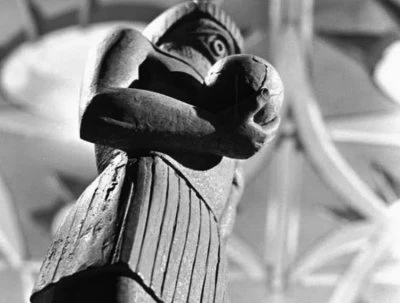
Not content with almost causing the extinction of humanity on their first visit, the Doctor takes his companions for another look to see what's caused the change in status quo. Weakened by a resurgence of the virus, the humans were unable to stand up to a Monoid revolt. Now the tables have turned, with the Monoids in charge and humanity as their slaves. The Monoids can even talk now, thanks to a new technological advance that gives them the voiceover effect they previously did without. Unfortunately, the addition of voices makes the Monoids far less interesting than they were before, and they rapidly turn into the sort of ranting aliens we'd managed to avoid so far. The third episode, “The Return,” largely concerns Steven trying to foment rebellion in the human population, with the support of the Doctor and Dodo. Not that any of them cared much when the Monoids were the slaves, but I suppose they feel responsible for this new power structure. Finally, “The Bomb” sees the Ark reach its destination, the planet Refusis Two. It's the lush paradise both the humans and Monoids had hoped for, but is already inhabited. The native Refusians – powerful, advanced, and completely invisible – are happy to share their planet, but only with peaceful people.
The serial has some truly remarkable visuals, the production crew seeming to go out of their way to show just how far they've come in the two-and-a-half years since the series began. Barry Newbury's set design is epic, lending an astonishing scale to the Ark, helped by director Michael Imison's use of forced perspective. Imison also used the technique known as playback to insert video sequences into scenes as they were recorded, allowing characters to communicate over video screens or watch a handy catch-up of events from earlier episodes. All very common now, of course, but at the time, still cutting edge. Everything from the shuttles leaving the Ark to reach the planet below to the motion of objects carried by the invisible aliens, to the miniaturisation process are highly impressive when compared to other British television productions of the era. It's hard to appreciate now, spoilt as we are by the sophisticated technology and techniques of today, but the visual effects on display here are truly impressive for the time.
Still, the limits of the budget are clear. Invisible aliens are, of course, a well-worn and reliable way of including a strange creature without spending any money of make-up or costumes. Doctor Who had already featured invisible aliens earlier in the season in The Daleks' Master Plan and would show up several times right up until the twenty-first century series. Perhaps the most delighful bit of budget-saving though is the Ark's galley, which is used as a prison by the Monoids to keep their slaves in between jobs. This doubled-up location is referred to, wonderfully, as the “Security Kitchen.” In other such landmarks of dialogue, the Refusians are revealed to have become invisible to do a “galaxy accident.” Perhaps these gems are down to Lesley Scott, the second contributed writer on the script, but seems to have had next to no actual input. She was, however, married to Erickson while he did the actual writing.
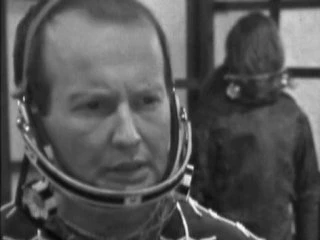
While much of this serial's appeal is in its ideas and spectacle, there's a pretty decent cast hidden here. Michael Sheard, forever known to the British public as Mr. Bronson from Grange Hill, makes the first of his six Doctor Who appearances. He returned again and again opposite four other Doctors over the next twenty-two years, playing more distinct characters than on the series than any other actor. One of several actors providing voices for the Monoids in the second half is Roy Skelton, making his first Who appearance. He'll be back numerous times over the years both on screen and in voice only roles, often providing the vocals for Daleks, Cybermen and other monsters, but you'll recognise him best as the voice of Zippy and George on Rainbow. Eric Elliott is memorable as the upper-class Commander of the Ark in the first half, while Inigo Jackson (Ivanhoe, Department S) makes a spirited go as his more aggressive deputy. Richard Beale (UFO, Treasure Island) gives a great, booming voice as the invisible Refusian leader; he'd be back in two serials time as Bat Masterson in The Gunfighters and provided more vocal work in The Macra Terror.
Really, though, The Ark is about ambitious ideas. A huge spaceship visualised as never before, stretching the series' budget and techniques to their limits to provide the grand scale required. A seven-hundred-year journey across the stars to a new home. The common cold triggering a complete societal upheaval. Millions of years of future history, just waiting to be explored. The second half is a bit of a run-around, true, but frankly, the plot isn't the point of the exercise. This is the first time (of many) that Doctor Who had the courage to show the end of the world and made it clear that it was really just the beginning.
Review by Daniel Tessier


